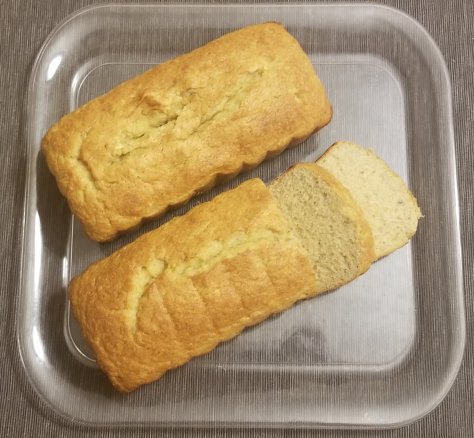Prep time: 5 minutes
Bake time: 40 minutes
Total time: variable
Entry number two in the Broke Ass baking series.
“Good bread is the most fundamentally satisfying of all foods; and good bread with fresh butter, the greatest of feasts”
-James Beard
There is nothing better than some crusty bread fresh from the oven.

The Ingredients:
- 6 1/2 cups All Purpose Flour
- 3 cups water (80° to 100°)
- 1 Tblsp Kosher Salt
- A Splash of Olive Oil
The Method:
Pour water, salt, and oil into large container.

Stir to until salt is dissolved .
Stir in 6 1/2 cups of flour.

Stir ingredients until a wet dough forms, do not bother kneading gluten will form in time.
Let dough sit at room temperature for 1 hour to 5 hours until it had risen and begun to deflate.

Put the dough in the fridge and make use of as you see fit.
Making Bread
- Open dough container take out a fist sized ball.
- Roll in to a ball and place on either a peel with corn meal on it or with a sheet of parchment paper on it.
- Cut dough either in decorative or traditional ways.
- Pre heat oven to 400° with a baking stone approx 6 inches from the top of the oven.
- While preheating place a broiler pan in to heat up.
- Let dough do a second rise for about 30 minutes or until it has about doubled in sized.
- Slide dough ball on to baking stone and pour a cup of water in to the roasting pan. (You have just made a steam oven… of sorts.)
- Bake until crust is browned to your liking and firm to the touch. About 30 minutes.
- Lastly if you have the spiritual fortitude to do so, let the bread cool to room temp before eating, you crumb will be better and this the texture.
Final Thoughts:
When it’s all said and done this dough can be used in many different applications honestly I mostly use it for pizza and calzones during the week. But it makes great crusty bread that goes with most dinners.
If you are wondering what the strange plastic container is, it’s an old red vines container cleaned and repurposed. I’m a big fan of repurpising containers to reside plastic waste and because it’s way cheaper than buying a container.



 Add starter and salt to autolyse dough.
Add starter and salt to autolyse dough.




